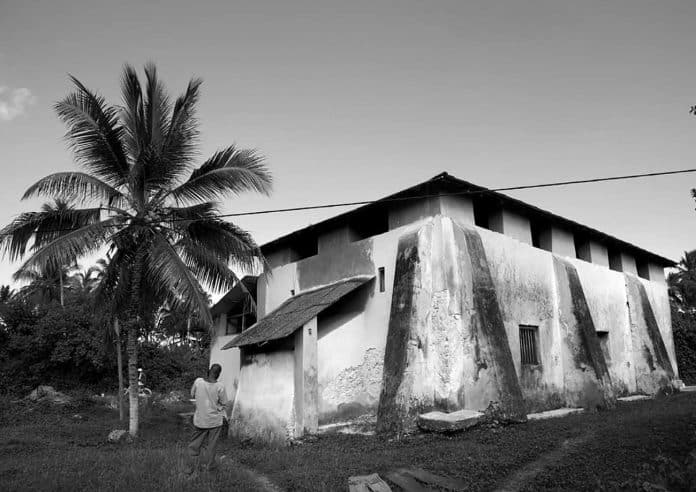Kizimkazi Mosque – Overview, Inscriptions, Niches, Arch and More
Background of Kizimkazi Mosque Zanzibar
As far as we know, the Kizimkazi Mosque may be the first Islamic edifice on the East African coast, located on the southern tip of Zanzibar Island. A little community called Dimbani is located three kilometers northwest of the town of Kizimkazi, which was referred to in the 12th century as a prominent and fortified city. According to an inscription found in subsequent mosques, Shirazi residents erected the island’s first mosque in the early 12th century. The Kufic inscription dates it to 500 AH, or 1107 AD, making it the earliest inscription on the shore, but recorded dates are rare in this area. In addition to the trefoil mihrab, these two characteristics are the mosque’s most distinctive features.
Kufic engravings by the sinistral of this mihrab indicates that Sheikh Said (bin Abi Amran Mfaume al Hassan bin Muhammad) directed the Kizimkazi Mosque’s erection; at Dhul Kaadi in the year 500 after Hijrah. The edifice was completely reconstructed in 1184 AH or 1772-1773 AD, according to an inscription to the right of the mihrab. Aside from some twelfth-century and later additions, most of the mosque’s fabric dates back to the seventeenth century.
Influence
Many mosques in Zanzibar’s Stone Town are considered to have been influenced by the trefoil mihrab, which goes back to the eighteenth century. Also, the Kizimkazi Mosque’s massive stone ceiling is supported by a stunning arch with no keystone at its end. The poly lobed and cusped trefoil design also forms a plaster arcade along the north wall on either side of the mihrab, with the arches interlocking overextended shafts. As previously mentioned, two inscriptions are found above the cornice lines of these arcades. Another inscription band goes around the interior of the mihrab to divide it from an upper arcade, which consists of around coral shafts. This lower arcade may be seen in the recess of the mihrab apse.
The well-crafted coral sculptures in the upper order niches of the Kizimkazi Mosque, most likely dating from the twelfth century, served as an inspiration for the trefoil’s belated usage. A single two-centimeter-thick coral panel was used to create each foliated niche. Cable-patterned moldings are intertwined throughout the carvings of the upper classes. They are a twelfth-century mosque feature because of the great quality of the coral carvings.

The arch of the mihrab is supported by two recessed squared orders. Two scalloped coral bosses in concentric circles embellish the arch’s spandrel encircled by rebated moldings. This architrave is followed by two plain paneled jambs on the qibla wall, interrupting the arcade. The bulging roof of the Kizimkazi Mosque apse is a fluted semi-dome.
Coral decoration and column shafts of the Kizimkazi Mosque date back to the 12th century, but most of the mosque was rebuilt in the 18th century. The mihrab is blocked by a row of three columns that runs the prayer hall’s north-south axis length. This is typical of East African coastal architecture. With an ablution space to the south of the mosque, the courtyard swings around to the mosque’s eastern side. Mosque dimensions are preserved by extending the eastern court and the roofed south ablution chamber about one bay beyond the complex’s plan. The mosque’s east wall was recently renovated, and the mosque’s roof was replaced with corrugated iron.
Close to the Kizimkazi Mosque, you would realize that one of the tombs surrounded by pillars is Sheikh Ali bin Omar, a man born with only one arm and one leg. In the modern-day, prayer flags are often hung on tombs.
Other Important Information
Events: 1107/500 AH (After Hijrah); 18th-century reconstruction
Structure Names Variant: Kizimkazi and Dimbani Mosques are variants of names famous by the Shirazi people.
Structure Usage: This edifice serves as a home for several Islamic worshippers’ mosques.
For more articles related to Main Religion in Tanzania, click here!





























